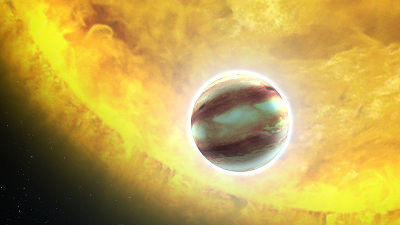Finally the James Webb Space Telescope succeeded in observing undiscovered planets

by
The James Webb Space Telescope, developed as a successor to the Hubble Space Telescope, was launched in December 2021, and observations using the main sensor began in July 2022. And on January 12, 2023, it was reported that the previously unknown extrasolar planet ' LHS 475 b ' was observed.
NASA's Webb Confirms Its First Exoplanet | NASA
https://www.nasa.gov/feature/goddard/2023/nasa-s-webb-confirms-its-first-exoplanet

A whole new world!
—NASA Webb Telescope (@NASAWebb) January 11, 2023
41 light-years away is the small, rocky planet LHS 475 b. At 99% of Earth's diameter, it's almost exactly the same size as our home world. This marks the first time researchers have used Webb to confirm an exoplanet. https:/ /t.co/hX8UGXplq2 #AAS241 pic.twitter.com/SDhuZRfcko
The newly discovered LHS 475 b is 99% the size of the earth and orbits the red dwarf star every two days. As a result, the surface of LHS 475 b is several hundred degrees hotter than Earth. However, since the red dwarf that LHS 475 b orbits has a much lower temperature than the Sun, it has been pointed out that LHS 475 b may have an atmosphere.
Planet LHS 475 b is a few hundred degrees warmer than Earth and very close to its star, completing an orbit in just 2 days. However, its red dwarf star is much cooler than our Sun, so scientists theorize it could still have an atmosphere.
—NASA Webb Telescope (@NASAWebb) January 11, 2023
The following shows the transmission spectrum of LHS 475 b observed by the infrared spectrometer ' NIRSpec ' on the James Webb Space Telescope. From this observation result, it can be read that LHS 475 b is a rocky planet. However, the atmospheric composition of LHS 475 b is still unknown, and NASA has indicated that it will continue to analyze it.

Related Posts:
in Science, Posted by log1o_hf







